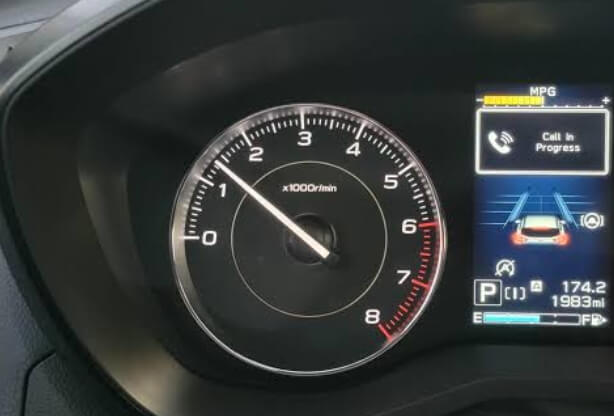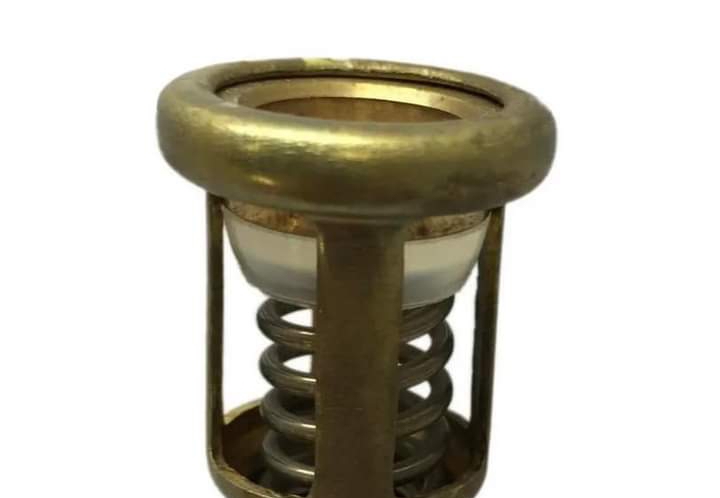As an Amazon Associate, we earn from qualifying purchases. This does not affect the price you pay or the quality of the products you buy. For more information, please read the full affiliate disclosure here.
If you have ever wondered what the numbers on your car’s dashboard mean, you may have noticed one that shows the RPM, or revolutions per minute.
This number indicates how fast your engine is spinning, and it can vary depending on whether you are accelerating, decelerating, or idling.
But what is the ideal RPM for your car when it is idling, and is 1000 RPM idle bad?
In this article, we will explain what causes your car’s idle speed to change, what are the symptoms of a high or low idle speed, and what you can do to fix it.
What is Idle Speed?

Idle speed is the speed at which your engine runs when your car is not moving and your foot is off the gas pedal.
It is measured in RPM, which stands for revolutions per minute. The RPM gauge on your dashboard shows you how fast your engine is spinning, and it usually ranges from 0 to 10,000.
The idle speed of your car depends on several factors, such as the type, make, and model of your car, the ambient temperature, the load on the engine, and the condition of the engine and its components.
However, most cars have an ideal idle speed that is between 600 and 1000 RPM. This range ensures that your engine is running smoothly and efficiently, without wasting fuel or causing excessive wear and tear.
Why Does Idle Speed Change?
Your car’s idle speed can change due to various reasons, such as:
1. Engine Temperature
When your engine is cold, it needs more fuel and air to run properly, so your idle speed may be higher than normal until the engine warms up. Conversely, when your engine is hot, it needs less fuel and air, so your idle speed may be lower than normal.
2. Air Conditioning
When you turn on the air conditioning, it puts an extra load on the engine, so your idle speed may increase to compensate for the power loss.
3. Electrical Accessories
When you use electrical accessories, such as the radio, the headlights, or the windshield wipers, they draw power from the battery, which in turn affects the alternator, which supplies power to the engine. This may cause your idle speed to fluctuate slightly.
4. Faulty Components
If there is a problem with any of the components that control or affect the idle speed, such as the idle control valve, the throttle, the fuel injectors, the spark plugs, the oxygen sensor, or the computer, your idle speed may be too high or too low, or it may surge or drop randomly.
ALSO READ:- Does oil pressure increase with RPM? Find out the truth
Is 1000 RPM Idle Bad ?
If your car is idling at 1000 RPM, it may not necessarily be bad, as long as it is within the normal range for your car.
However, if your car is consistently idling at 1000 RPM and you notice other symptoms, such as rough idling, decreased fuel efficiency, or a noticeable drop in power, it may be time to take your car to a mechanic for a checkup.
A high idle speed can indicate several issues, such as:
1. A faulty idle control valve: The idle control valve is a device that regulates the amount of air that enters the engine while the car is idling. If it is clogged, dirty, or stuck, it may not be able to adjust the idle speed properly, resulting in a high idle speed.
2. A vacuum leak: A vacuum leak is a hole or cracks in the hoses or gaskets that connect the engine to the intake manifold, which is the part that distributes the air and fuel mixture to the cylinders. A vacuum leak can cause the engine to suck in more air than it should, causing a lean condition, which means there is not enough fuel for the amount of air. This can cause the engine to run faster and hotter, resulting in a high idle speed.
3. A dirty or faulty throttle: The throttle is the part that controls the amount of air and fuel that enters the engine when you press the gas pedal. If the throttle is dirty, sticky, or damaged, it may not be able to close properly when you release the gas pedal, causing the engine to receive more air and fuel than it needs, resulting in a high idle speed.
ALSO READ:- What Are Signs of Bad Valve Seals and How To Fix Them?
How to Fix a High Idle Speed?
If your car is idling at 1000 RPM and you suspect that there is a problem, you should take your car to a mechanic as soon as possible to diagnose and fix the issue.
However, there are some things you can do to try to fix a high idle speed yourself, such as:
1. Check and clean the idle control valve
The idle control valve is usually located near the throttle body, which is the part that connects the air intake to the engine. You can use a screwdriver to remove the idle control valve and spray it with a carburetor cleaner to remove any dirt or debris that may be affecting its function. You can also use a multimeter to test the electrical resistance of the idle control valve and see if it is within the specifications. If the idle control valve is faulty, you may need to replace it with a new one.
2. Check and fix any vacuum leaks
You can use a spray bottle filled with water or a can of carburetor cleaner to spray around the hoses and gaskets that connect the engine to the intake manifold. If you hear a hissing sound or see bubbles, it means there is a vacuum leak. You can use duct tape or epoxy to seal the leak temporarily, or you can replace the hose or gasket with a new one.
3. Check and clean the throttle
You can use a screwdriver to remove the air intake hose and the throttle body from the engine. You can then use a rag and a carburetor cleaner to wipe off any dirt or carbon buildup that may be preventing the throttle from closing properly. You can also use a multimeter to test the electrical resistance of the throttle position sensor and see if it is within the specifications. If the throttle or the sensor is faulty, you may need to replace it with a new one.
Final Words
Your car’s idle speed is an important indicator of your engine’s health and performance. Ideally, your car should idle between 600 and 1000 RPM, depending on the type, make, and model of your car.
If your car is idling at 1000 RPM, it may not be bad, as long as it is within the normal range for your car.
However, if your car is consistently idling at 1000 RPM and you notice other symptoms, such as rough idling, decreased fuel efficiency, or a noticeable drop in power, it may be time to take your car to a mechanic for a checkup.
Share

